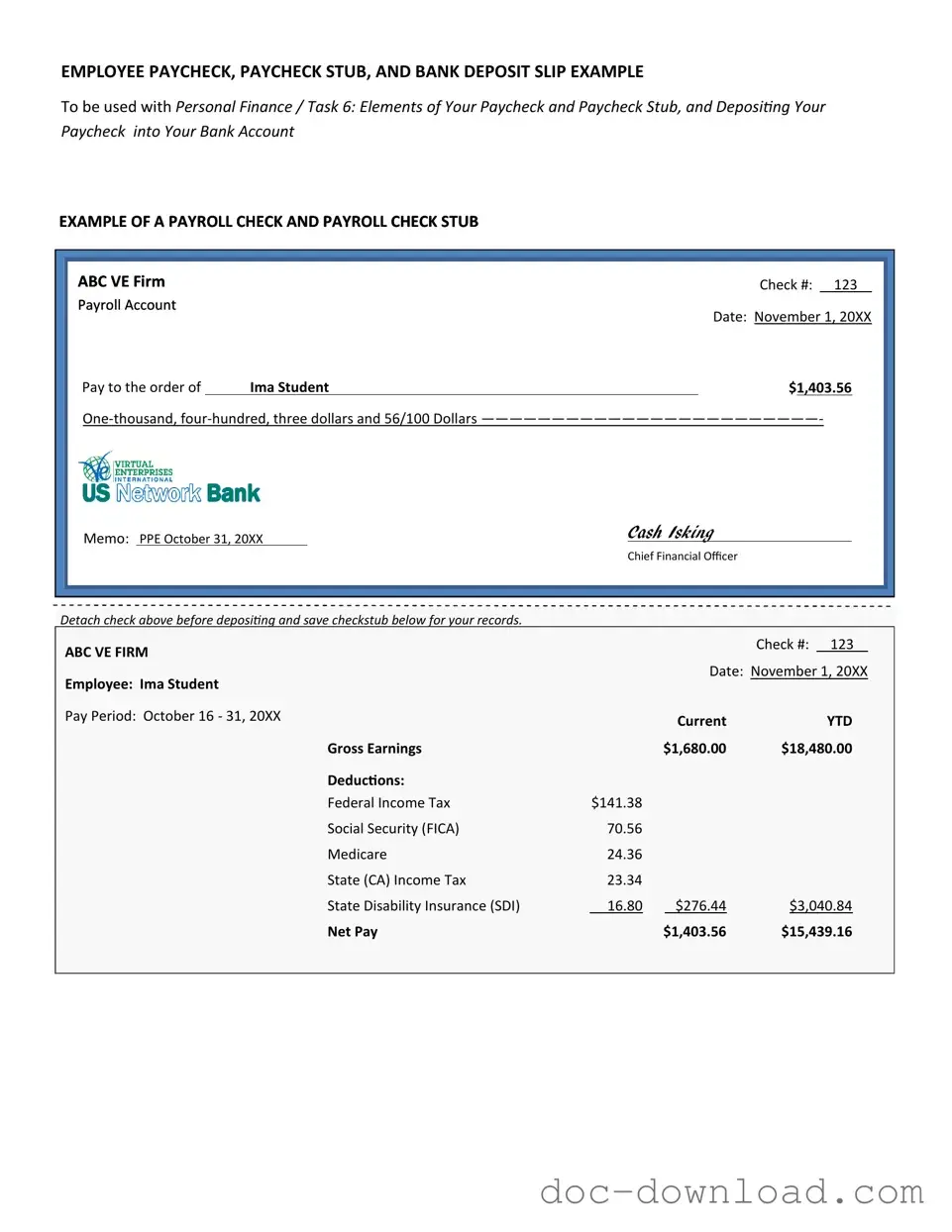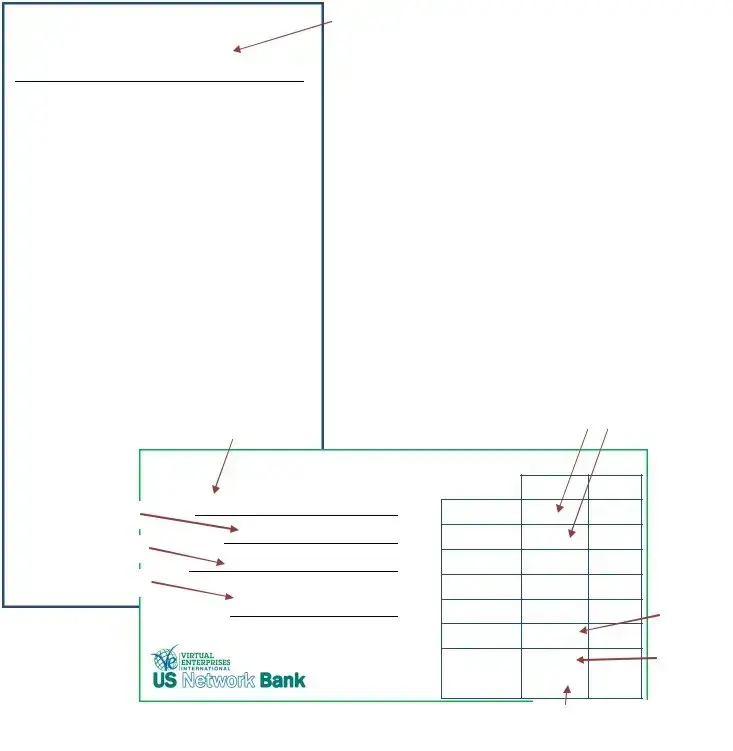The Payroll Check form is similar to the Direct Deposit Authorization form. Both documents serve the purpose of facilitating employee compensation, but they differ in how payments are processed. While the Payroll Check form is used for issuing physical checks to employees, the Direct Deposit Authorization form allows for funds to be electronically deposited into an employee's bank account. This can streamline the payment process and reduce the need for paper checks.
Another document that shares similarities with the Payroll Check form is the Wage Garnishment Order. This legal document instructs an employer to withhold a portion of an employee's wages to satisfy a debt. Like the Payroll Check form, it involves the calculation of earnings and requires accurate record-keeping to ensure compliance with legal requirements. Both documents must be handled with care to protect the employee's rights and ensure proper payment distribution.
When dealing with property transactions, it's essential to understand the various forms involved, one of which is the North Carolina Quitclaim Deed. This legal document facilitates the transfer of real estate ownership without ensuring that the title is clear, making it a practical choice for family members or acquaintances. To learn more about this form and access a template, visit https://quitclaimdeedtemplate.com/north-carolina-quitclaim-deed-template/.
The Employee Pay Stub is also akin to the Payroll Check form. While the Payroll Check form is used to issue payment, the Pay Stub provides a detailed breakdown of that payment. It outlines gross pay, deductions, and net pay, allowing employees to understand how their compensation is calculated. Both documents are essential for transparency and help employees keep track of their earnings and deductions.
The Time Sheet is another related document. It records the hours worked by an employee, which directly influences the amount paid on the Payroll Check form. Accurate timekeeping is crucial, as discrepancies can lead to incorrect payments. Both documents rely on precise information to ensure employees are compensated fairly for their work.
The Employment Contract is similar in that it outlines the terms of employment, including salary and payment frequency. While the Payroll Check form is a mechanism for payment, the Employment Contract serves as a foundational agreement that specifies how and when employees will be compensated. Both documents play a critical role in the employer-employee relationship.
The Tax Withholding Form, often referred to as the W-4, is another document that interacts closely with the Payroll Check form. This form determines how much federal income tax is withheld from an employee's paycheck. The Payroll Check form reflects these withholdings, making it essential for both compliance and accurate payroll processing. Employees must complete this form to ensure the correct amount is deducted from their earnings.
The Benefits Enrollment Form is also relevant. While it does not directly relate to the payment process, it impacts the overall compensation package an employee receives. The Payroll Check form may reflect deductions for benefits such as health insurance or retirement contributions. Both documents work together to provide a comprehensive view of an employee's financial compensation and benefits.
The Bonus Payment Request form is similar in that it involves additional compensation outside of regular wages. This document outlines requests for bonus payments, which may be reflected on a separate Payroll Check form. Both documents require clear communication between employees and employers to ensure that bonuses are processed accurately and in a timely manner.
Lastly, the Expense Reimbursement Form is another document that can be linked to the Payroll Check form. Employees use this form to request reimbursement for business-related expenses incurred during their work. Once approved, these reimbursements may be included in the next Payroll Check, highlighting the interconnectedness of various payroll-related documents in ensuring employees receive all entitled compensation.


